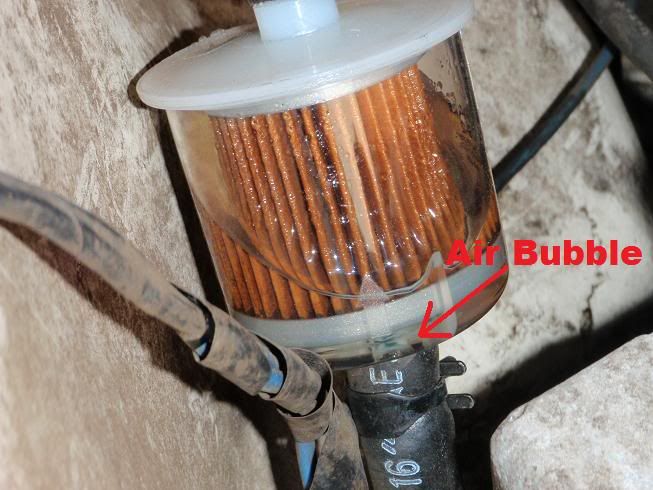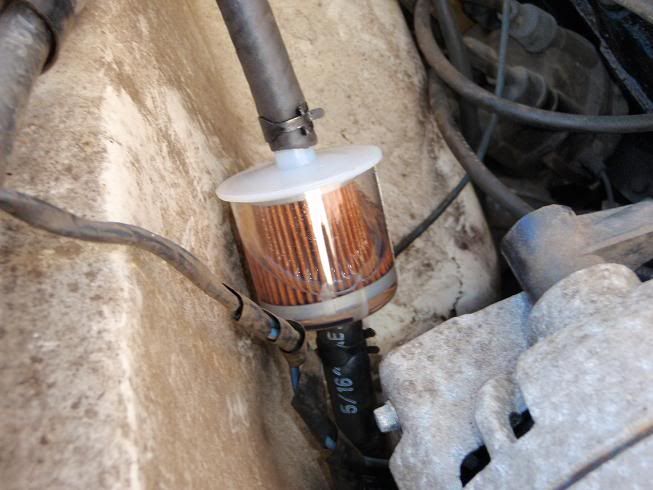TripleJackInGA
Master of None
72 Dart 225/Auto
I just got the car, and had some issues with it being a PITA when restarting after it had been driven. As an example, I would drive somewhere, turn it off, come back 5-15 minutes later, and it acts like it's not getting fuel. It takes at least 3 tries to start it, and it acts like it's missing or starving for fuel real bad for a minute after it starts.
I already suspect I may have accelerator pup issues, as it has an off-idle stumble.
So I did the fuel line mod a few days ago. No, I didn't use Fuel Injection hose, as I'm tight for money right now. I used standard fuel line hose.
I'm still having this hot restart issue, and when I stopped at the parts store today, I came out 10 minutes later to check something else, and noticed there were bubbles coming up in the inline filter. They were coming up from the pump side. They didn't look like boiling bubbles, but more like bubbles you would see if the fuel is draining back into the tank, and air is replacing it, if that makes any sense. I tried snapping a few photos of the bubbles in action, and this is the best I could capture. Also note the routing of my fuel line, and placement of the filter.



I just got the car, and had some issues with it being a PITA when restarting after it had been driven. As an example, I would drive somewhere, turn it off, come back 5-15 minutes later, and it acts like it's not getting fuel. It takes at least 3 tries to start it, and it acts like it's missing or starving for fuel real bad for a minute after it starts.
I already suspect I may have accelerator pup issues, as it has an off-idle stumble.
So I did the fuel line mod a few days ago. No, I didn't use Fuel Injection hose, as I'm tight for money right now. I used standard fuel line hose.
I'm still having this hot restart issue, and when I stopped at the parts store today, I came out 10 minutes later to check something else, and noticed there were bubbles coming up in the inline filter. They were coming up from the pump side. They didn't look like boiling bubbles, but more like bubbles you would see if the fuel is draining back into the tank, and air is replacing it, if that makes any sense. I tried snapping a few photos of the bubbles in action, and this is the best I could capture. Also note the routing of my fuel line, and placement of the filter.




















